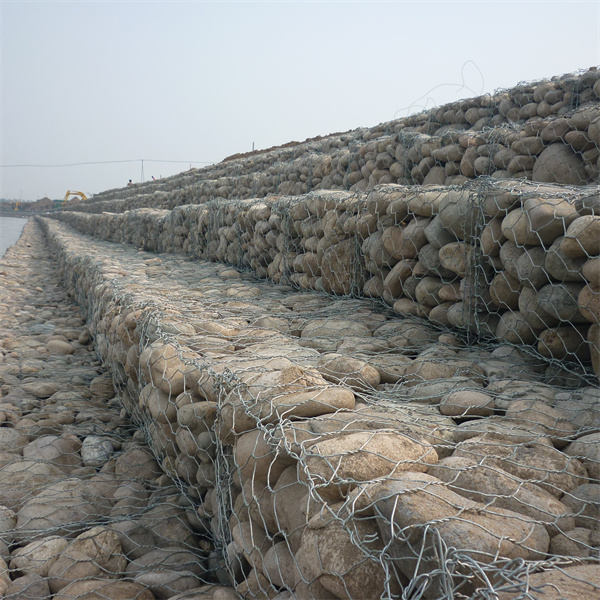aug . 14, 2024 02:42 Back to list
Leading Manufacturer of Triangular Gabion Baskets for Innovative Landscaping and Erosion Control Solutions
The Triangular Gabion Baskets Innovation in Erosion Control and Landscape Design
In an era where environmental sustainability is at the forefront of construction and landscaping design, triangular gabion baskets have gained significant popularity. As manufacturers recognize the increasing demand for effective erosion control solutions, these innovative structures are becoming essential components in a range of applications, from civil engineering to decorative landscaping.
Understanding Gabion Baskets
Gabion baskets are typically made from steel wire mesh and filled with natural stones, gravel, or other materials. The traditional rectangular gabion designs have served their purpose effectively; however, the introduction of triangular gabion baskets presents various benefits that expand versatility and functionality. Their triangular shape allows for better adaptability to different landscapes and facilitates unique design opportunities.
Applications in Erosion Control
One of the primary uses of gabion baskets, including their triangular counterparts, is erosion control. They are strategically placed along riverbanks, slopes, and construction sites to prevent soil displacement caused by water flow or wind. Triangular gabion baskets are particularly effective in creating a robust, stable structure that can withstand the forces of nature. By employing a triangular design, these baskets can interlock more effectively, creating a stronger barrier against erosion.
Additionally, the aesthetic appeal of triangular gabions cannot be overlooked. Landscape architects are increasingly utilizing these structures to create visually appealing features. They can be arranged in patterns that not only provide functional benefits but also enhance the beauty of the environment. This dual functionality is crucial in urban areas where pressure to balance development with environmental preservation is intense.
Manufacturing Process and Material Selection
triangular gabion baskets manufacturer

As a leading manufacturer of triangular gabion baskets, it is essential to focus on quality and durability. The manufacturing process involves using high-tensile galvanized wire to guarantee resistance against corrosion and degradation over time. The selection of the filling material is equally crucial, as it impacts both the structural integrity and aesthetic outcome of the gabion.
Manufacturers often offer customization options to cater to specific project requirements. This can include adjusting the dimensions, wire thickness, and filling materials. By providing flexible solutions, manufacturers can meet the diverse needs of engineers, architects, and landscapers alike.
Environmental Benefits
The growing trend towards using triangular gabion baskets is also rooted in environmental considerations. They offer a sustainable solution by utilizing local materials for filling, which reduces the carbon footprint associated with transport and production. Moreover, gabions promote vegetation growth, as the gaps in the structure can allow plants to take root, further stabilizing the soil and enhancing ecological benefits.
By integrating gabion systems into landscaping and civil engineering projects, manufacturers can contribute to efforts aimed at habitat restoration and the protection of natural resources. This aligns with global sustainability goals as communities strive to develop infrastructure that harmonizes with nature rather than against it.
Conclusion
Triangular gabion baskets represent a significant advancement in erosion control and landscape design. Their versatile applications and aesthetic potential make them a valuable asset for engineers and designers. As manufacturers continue to refine their processes and innovate materials, the future of triangular gabions looks promising. Not only do they serve a critical functional role in erosion control, but they also contribute to sustainable landscaping and environmental stewardship. Whether in a civil engineering project or a garden landscape, triangular gabion baskets are set to play a pivotal role in achieving both durability and beauty in modern construction.
-
Why PVC Coated Gabion Mattress Is the Best Solution for Long-Term Erosion Control
NewsMay.23,2025
-
Gabion Wire Mesh: The Reinforced Solution for Modern Construction and Landscape Design
NewsMay.23,2025
-
Gabion Wall: The Flexible, Seismic-Resistant Solution for Modern Landscaping and Construction
NewsMay.23,2025
-
Gabion Wall Solutions: The Durable, Decorative, and Affordable Choice for Every Landscape
NewsMay.23,2025
-
Gabion Basket: The Durable and Flexible Alternative to Traditional Retaining Walls
NewsMay.23,2025
-
Gabion Basket: The Proven Solution for Slope Stability and Flood Control
NewsMay.23,2025
-
Versatility of Chain Link Fence Gabion
NewsMay.13,2025






